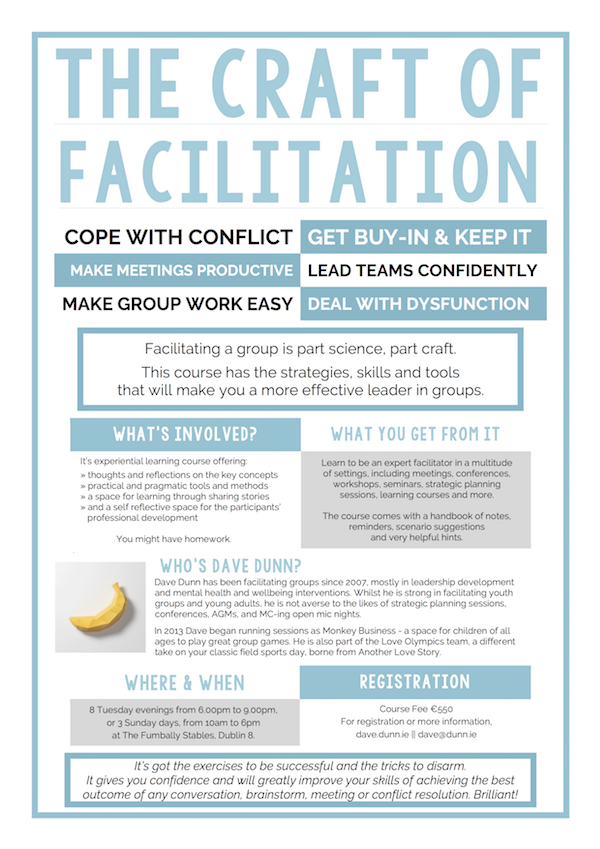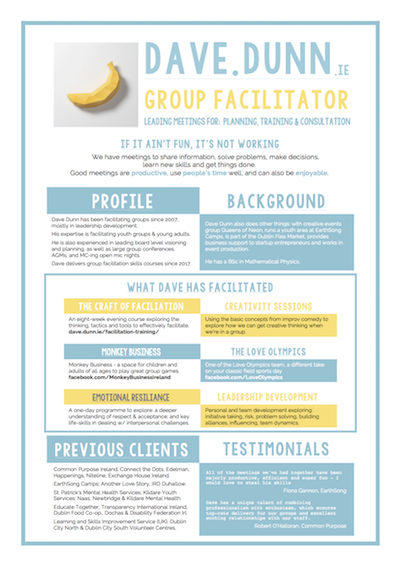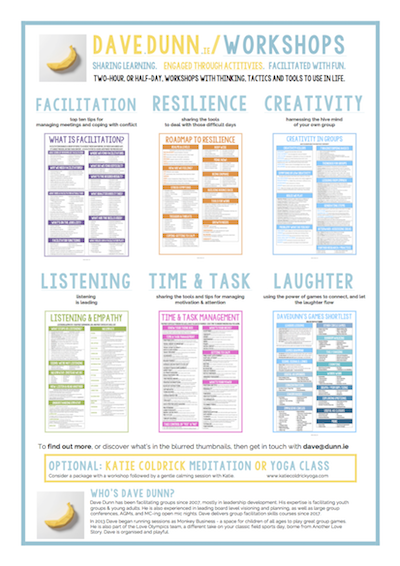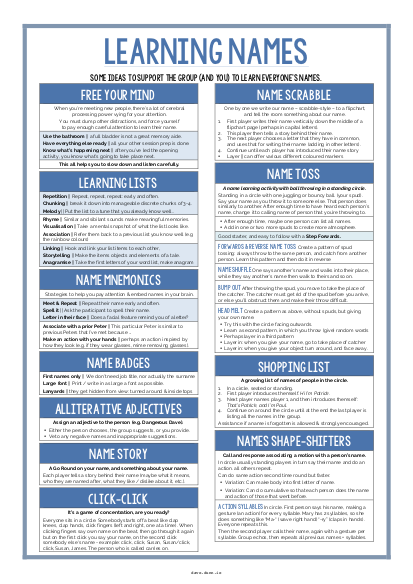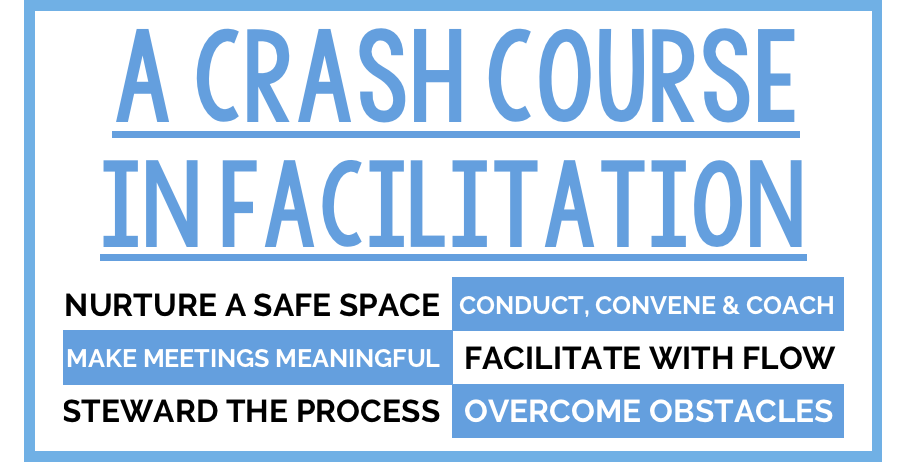
A Crash Course in Facilitation
A mid-level short course in group facilitation skills
Effective group facilitation requires a range of tools, methods and skills for hosting impactful gatherings.
This short-course goes beyond the beyond the basic fundamentals
to find the beginning of the journey of the high-functioning facilitator.
 WHY DO IT?
WHY DO IT?
Running a meeting, any meeting, is hard. Hosting gatherings is complicated and complex.
It’s hard because usually your group is comprised of complicated human beings with needs, triggers, emotions, habits, impulsive reactions and below-the-surface reflex strategies which make for behaviour that may – or may not – be helpful to the success of a session. There is lots to learn and lots of things to think about.
This Crash Course in Facilitation takes some second-stage steps into these tools, skills and theory of facilitation. No two facilitators’ learning journeys are ever the same, but there are some things that can be helpful to get to more skilfulness.
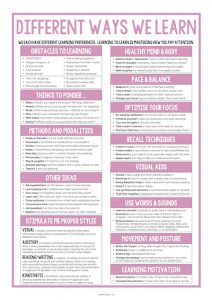 HOW DOES IT WORK?
HOW DOES IT WORK?
Getting better at facilitating group gatherings requires learning new things on many fronts. Often an entry point is learning how to run activities, exercises or group methodologies – the tools of the trade. Next on the growing agenda could be increasing competence at using such tools and being in a leadership role with other people – the skills required for the role. Then, there is the effortful work of updating our beliefs, attitudes and understanding of things like power, influence, problem-solving, compassion, responsibility – the growing mindset of the facilitator.
 WHAT’S INVOLVED?
WHAT’S INVOLVED?
The course can be delivered in two ways: three sessions of five hours or over five sessions of three hours.
The following is the course outline for the version over five shorter sessions.
§1 GETTING SETTLED
Beginnings are crucial Let’s get our own start right, so that we can learn from that.
Setting the scene for our own learning, learning about the five fundamentals of facilitation, and sharing approaches that work to make the right first impressions.
§2 PURPOSE PROCLAIMED & CULTURE CODE
We need to know why we are here, and we need to have a conversation to encode how we treat each other.
The importance and theory behind the Why and the How of humans in groups. Also including various methods to open and progress those conversations.
§3 NEXT LEVEL LISTENING
If there’s no listening, you’re going nowhere.
Listening is simple, but it is not easy. Listening, noticing, watching and observing on multiple levels is a skillset that can only improve.
§4 POWER & PROTEST: COPING WITH CONFLICT
When it all goes south, everyone will be looking to you.
As facilitators, we need to be prepared for disruptions, dysfunctions, conflict, difficult discussions and challenging conversations.
§5 HERDING HUMANS: HELPFUL HACKS & HINTS FOR GROUP MANAGEMENT
Most groups have hard-workers, holiday makers and some hostages/ hijackers.
A chance to discover more tactics and tricks to help you to facilitate with grace. Also including suggestions on further avenues to explore to practice your craft.
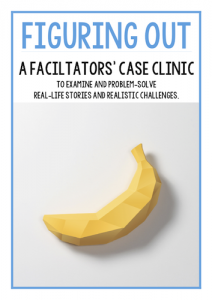
THE FACILITATOR’S CLINIC
If the content is not relevant, then the time spent training is wasted.
The Facilitator’s Clinic is a space in the training room to examine real-life stories and realistic challenges.
The trainer and participant group together then design appropriate effective solutions, coping mechanisms and/or preventative measures.
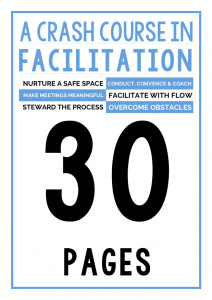
BOOKLET OF HANDOUTS
Each session comes with a selection of handouts describing and signposting in comprehensive detail more tools to use, methodologies to consider and further insights to ponder.
